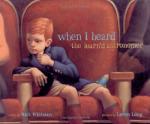|
This section contains 289 words (approx. 1 page at 400 words per page) |

|
When I Heard the Learn'd Astronomer Summary & Study Guide Description
When I Heard the Learn'd Astronomer Summary & Study Guide includes comprehensive information and analysis to help you understand the book. This study guide contains the following sections:
This detailed literature summary also contains Bibliography on When I Heard the Learn'd Astronomer by Walt Whitman.
Walt Whitman, whose name is synonymous with the United States and who continues to be widely considered America's greatest romantic poet, was inspired in a variety of ways by the Civil War. Many of the poems in Drum-Taps (1865), for example, a collection that was instrumental in establishing Whitman as a spokesperson for his country, deal directly with the fierce struggle between the Union and the Confederacy. However, this collection also included a number of poems with broad stylistic and thematic innovations only indirectly related to the conflict. Diverse explorations of Whitman's powerful and musical poetic voice, these poems were later incorporated into a variety of sections of Whitman's most important work, Leaves of Grass, which he revised and released in various editions throughout his life.
"When I Heard the Learn'd Astronomer," which is included in the "By the Roadside" section of the standard 1892 edition of Leaves of Grass, published in New York and now widely available from imprints such as W. W. Norton (1973), is a prime example of a Drum-Taps poem whose subject is not confined to the Civil War. Although one of its important themes deals with the idea of unity and individualism that resonates with the struggle for the Union of States, "When I Heard the Learn'd Astronomer" is chiefly a poem about romanticism, nature, and astronomy. With its sophisticated linguistic devices and its organization that envisions an escape from a confined lecture room to the glory of the night sky, the poem contrasts the limited scientific process with a personal and romantic interaction with the stars. A visionary poem with an intimate and immediate voice, it is a brilliant example of Whitman's achievement, containing a broad and transcendental vision into a short romantic poem.
Read more from the Study Guide
|
This section contains 289 words (approx. 1 page at 400 words per page) |

|



